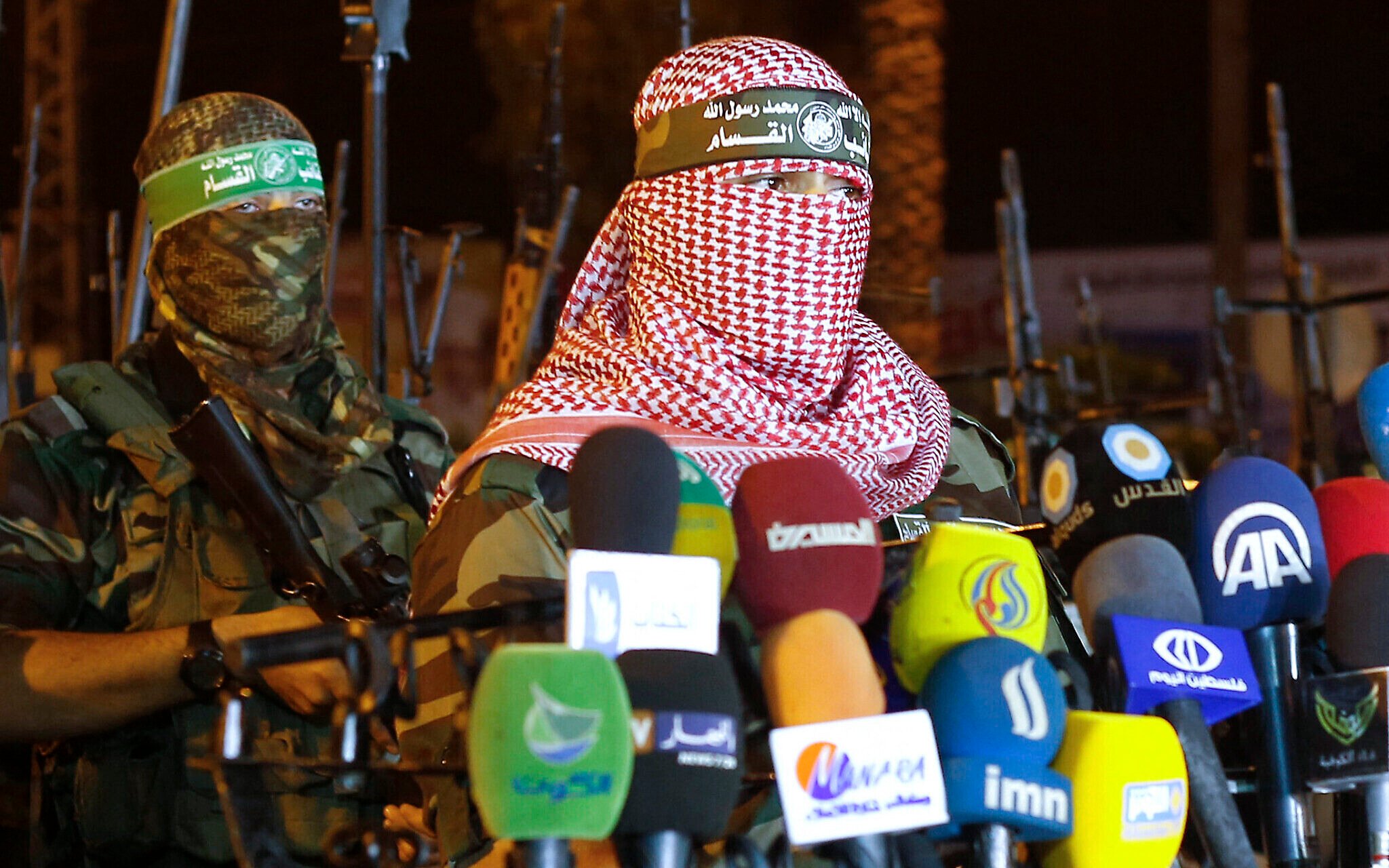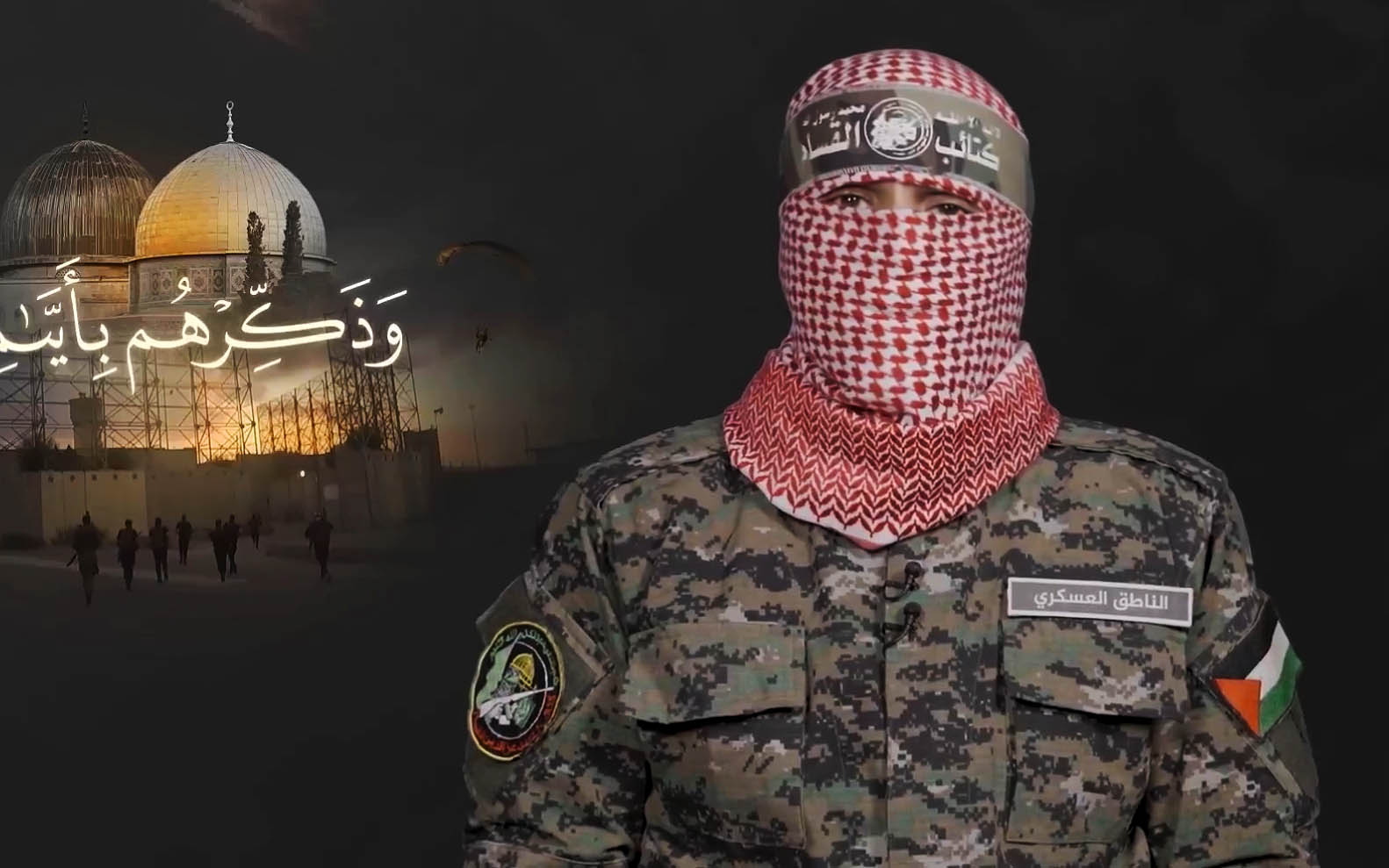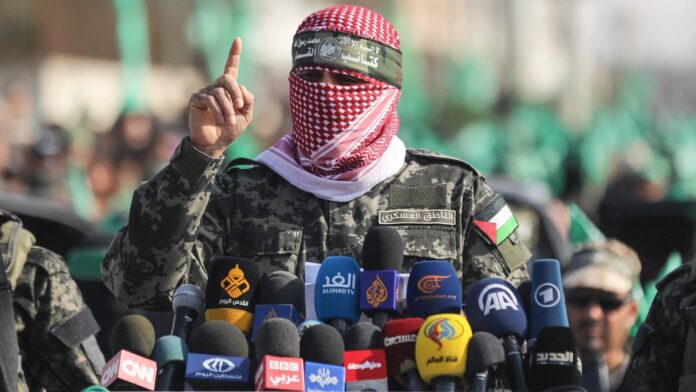Israeli Strike Ends Years-Long Hunt for Masked Hamas Figure
Israeli Defense Minister Israel Katz confirmed on Sunday that Abu Obeida, the longtime masked spokesman for Hamas’s armed wing, was killed in an Israeli airstrike on Gaza City. The announcement marked the end of one of the most high-profile figures in Hamas’s propaganda machine, who for nearly two decades symbolized the group’s defiance against Israel.
The strike, carried out late Saturday, targeted an apartment in the upscale Rimal neighborhood of Gaza City. According to Palestinian sources, the building was completely destroyed, killing Abu Obeida along with members of his family and others inside. Hamas military officials and relatives later identified his body, bringing an end to speculation over his fate.
The “Man in the Mask”

Abu Obeida, whose real name Israeli military sources identified as Hudahaifa Kahlout, had been a central figure for Hamas since 2004. Always appearing in camouflage fatigues with a distinctive red-checkered keffiyeh covering his face, he served as the voice of the Qassam Brigades, the group’s military wing.
He became one of the most recognizable figures of Hamas during the ongoing war, frequently appearing in televised statements to issue threats against Israel, provide updates from the battlefield, and release video footage aimed at boosting morale among Palestinians. To supporters, he represented resistance. To Israel, he was the chief propagandist of a movement it considers a terrorist organization.
His final public statement came on Friday, just a day before the strike, when he warned that Israeli hostages in Gaza faced the “same dangers” as Hamas fighters amid Israel’s intensified bombardment of Gaza City.
Israel’s Announcement

Defense Minister Katz confirmed Abu Obeida’s death in a post on X, saying the spokesman had been “sent to meet all the eliminated members of the axis of evil from Iran, Gaza, Lebanon, and Yemen at the bottom of hell.” Katz congratulated the Israeli Defense Forces (IDF) and Shin Bet security agency for what he called a “perfect execution.”
Prime Minister Benjamin Netanyahu also addressed the matter during his weekly cabinet meeting. He noted that Israel had targeted Abu Obeida but initially stopped short of confirming the result. “I hope he is no longer with us,” Netanyahu said at the time, adding that Hamas had not issued any statement to deny or confirm the killing.
Blow to Hamas’s Leadership
The death of Abu Obeida is being described by Israeli officials as a significant psychological and strategic blow to Hamas. Beyond his role as a spokesman, he was regarded as a key figure in Hamas’s propaganda and information warfare.
In April 2024, the United States sanctioned him, describing him as Hamas’s “information warfare chief.” He was credited with overseeing the release of propaganda videos, including footage from the October 7, 2023 attacks that sparked the current war. Analysts note that his ability to craft messages gave Hamas an important tool in influencing both domestic and international audiences.
Israeli security officials said the strike was part of a broader campaign to dismantle Hamas’s leadership structure. The Wall Street Journal reported that Abu Obeida was among the last prominent Hamas figures still operating openly in Gaza after months of targeted strikes against the group’s commanders.
Details of the Operation
According to the IDF, the strike was the result of close coordination between Israeli military intelligence and Shin Bet. Precision-guided munitions were used, the army said, with the intent of limiting civilian casualties. However, Palestinian reports indicated at least seven people, including members of Abu Obeida’s family, died in the attack.
The strike came as Israel escalated its operations in Gaza City, preparing for a wider ground offensive aimed at taking full control of the densely populated urban center. Military analysts argue that eliminating Abu Obeida may weaken Hamas’s ability to communicate with the outside world but is unlikely to halt the group’s operational capabilities on the battlefield.
Hamas’s Silence
As of Sunday evening, Hamas had not issued an official statement confirming Abu Obeida’s death. The group has historically delayed acknowledgment of senior leaders’ deaths, sometimes for weeks or months, in an effort to maintain uncertainty and morale among its supporters.
Still, Palestinian media outlets and Hamas-affiliated sources privately acknowledged his death after the recovery and identification of his body. For many in Gaza, the loss of Abu Obeida carries symbolic weight, as he had become a household name during two decades of conflict.
Wider Implications
The killing underscores Israel’s continued strategy of targeting Hamas’s leadership as it seeks to dismantle the group’s command structure. Over the past year, several senior figures of Hamas have been killed in airstrikes or special operations.
For Israel, the death of Abu Obeida marks both a symbolic and tactical victory. Yet analysts caution that Hamas has often been able to replace fallen leaders quickly. The group’s decentralized structure allows it to adapt, though the loss of a figure with such public prominence may complicate its propaganda and psychological warfare efforts.
As Israel presses on with its military campaign in Gaza, Abu Obeida’s killing highlights both the intensity of the conflict and the shifting dynamics of a war that shows little sign of ending soon.
Sources: BBC

